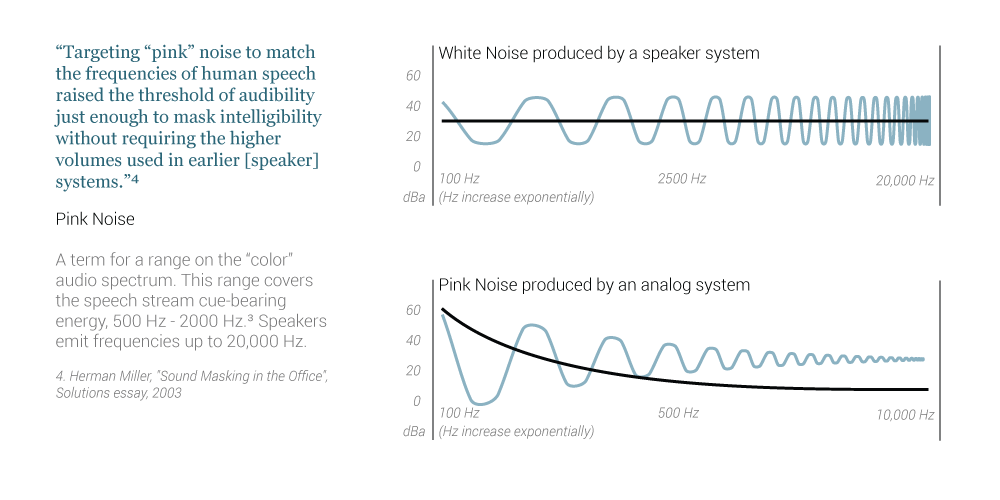I’ve been working on a personal project for my portfolio, a sound masking system for the office. Sound masking machines (sometimes wrongfully called white noise machines) emit a low frequency sound that “smothers” the sound of voices. With the machine, as the distance from the speaker increases, the intelligibility of the conversation significantly decreases.
The traditional style of sound masking system used a small fan as the audio source.
Today, the low end to middle range devices use small speakers. The speakers don’t isolate the lower frequency Hz “pink noise” that is most effective at covering human speech. The speakers used today actually are unable to isolate the specific range, producing “white noise”, proven to actually cause discomfort and in some cases, hearing loss. Imagine trying to work with a TV’s static sound in the background. Not fun.
Targeting “pink” noise to match the frequencies of human speech raised the
threshold of audibility just enough to mask intelligibility without
requiring the higher volumes used in [speaker] systems.
- Herman Miller, “Sound Masking in the Office”, Solutions essay, 2003
Several years back I bought one of those cheap little Homedics alarm clocks that can play different kinds of continuous background noise (you can choose from “white noise,” “rain,” “ocean waves,” etc). It was useless–the sound produced was tinny, not soothing, and did not mask other noises. The Marpac Sleep Mate 980 is far superior to an electronically generated sound that is played from a tinny speaker.
- Amazon review on the Marpac, one of the few units still available that uses a fan.
I’m only mentioning a couple of blurbs from my research, but I have a good deal of research supporting what form factor/features to pursue. I’m attaching a few of my exploration sketches. I’m exploring three major areas:
-
- Ceiling units (The bulk of the unit would be hidden within the Plenum, the space in the ceiling above the acoustical tiles)
- Floor units (sculptural and not meant to be hidden)
- A wall mounted unit (this is probably the tertiary direction)
Edit I deleted the images because I revamped them and included them below*
I stuck to an aquatic theme because of the way things sound underwater. Every sound seems to have more bass, more “umph”. Have you ever tried to speak or yell while swimming in a pool? Everything seems very distorted and toned down. Things sound more peaceful underwater.
I’d love to know what you think! I need fresh eyes, for sure. What would you like to see? What do you think is missing?
I’m in the process of developing the design further. Maybe a few more iterations, and some sketch models. I am going to delve into the interface of a remote control as well as testing the acoustics of the shape with a decibel reading app on my phone. I’m going to finish it off with a solidworks model. Ultimately, all tied up with a bow on my website.
















